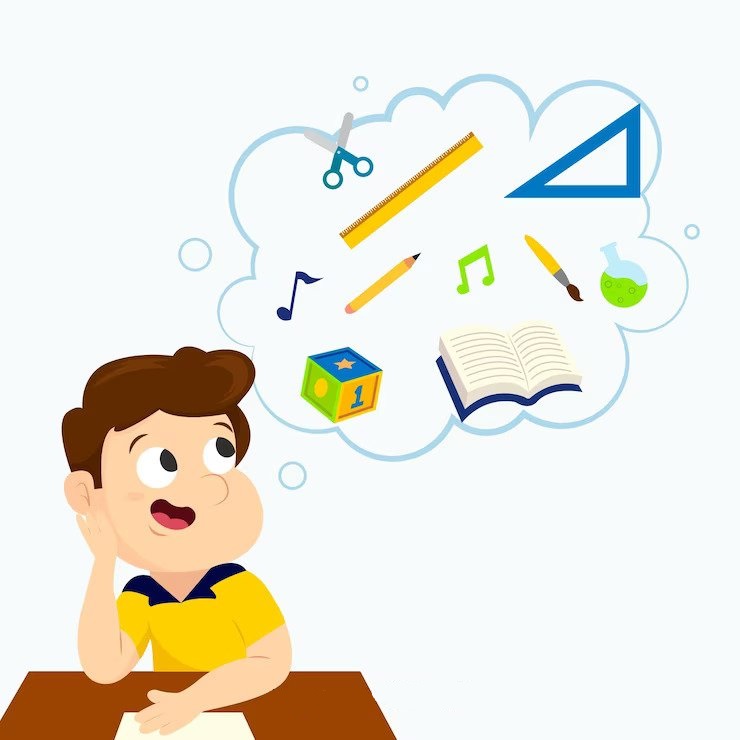
Emotional Intelligence in Children
Emotional Intelligence is the ability to know, manage and regulate emotions. Emotions affect our attention, learning, memory, relationships, physical and mental well-being.
Emotional intelligence is related to many important outcomes for children and adolescents. Children with higher emotional intelligence are better able to pay attention, are more engaged in school, have more positive relationships, and are more empathic (Raver, Garner, & Smith-Donald 2007; Eggum et al. 2011).
During pandemic children’s emotional being is also affected as they are restricted with playground play, meeting friends, school and extracurricular activities like sports day, other events, etc. Many children and adolescents are experiencing demotivation, anxiety and suffocation because of uncertainty and pandemic . They feel bored and unable to figure out “what” to do and “how” to do which puts them on edge and they start acting out.
Children/ adolescents sometimes fail to explain their discomfort and challenges with us as they are unable to verbalize it but that does not mean they are not experiencing anything.
It is important to work on children’s/ adolescents emotional intelligence to help them cope with these uncertainties which will promote their resilience. Here are some ways to support their emotional well-being:
-
Recognizing Emotions
Teaching children to recognize emotions for example, when they jump after completing any task, ask them “how do you feel on completing this task”?, or parents when they are upset about something, can express “I am angry over something”, this will increase their vocabulary, they learn to recognize emotions in a particular situation.
-
Introduce Mood meter
Mood meter is a tool to consciously note one’s energy from very low to extremely high (rating 1-10), when a child or an adolescent is experiencing any pleasant or unpleasant emotions. They have to rate, at start you as a care-giver can help them to rate and maintain record, later the child can do it themselves. Research suggests that an important part of effectively teaching emotional intelligence is by regularly checking in on the mood meter throughout the day. This way children or adolescents will be more aware of their own feelings, and emotions.
-
Recreational activities-
This can include any games or activities, such as playing board games, cards, vocabulary building games, logical reasoning games, helping other family members doing chores like cooking, cleaning, watering plants, grocery shopping etc. Recreational activities enhance creativity and promote emotional well-being. When a child is idle and has the same monotonous routine, it makes them bored and restless because their environment is not challenging for them and it creates more unpleasant emotions and behaviors, recreational activities challenge them and utilizes their energy productively.
-
Mindfulness Training
This will enhance brain flexibility in children and adolescents. Research shows that mindfulness is linked to lower stress and anxiety, and improvements in self-control, attention, resilience and better academic performance in youth. Mindfulness does not mean only meditation, it can be any form of relaxing activity like exercise, workout, playing outside on the playground, or listening to music, dance etc.these activities will relax the mind, helps in focussing on present thoughts and emotions.
-
Open Conversation-
Positive nonverbal communication is also important for helping them to learn how to relate to and get along with other people, which is an important skill for life. If you see that your child is struggling to open up with you, try to open channels for conversation like at dinner time, before sleeping share your personal experience with them, fictional stories, metaphors, role plays, teach them to write letters to express themselves. This way children and adolescents learn to communicate their feelings and emotions.
-
Care-giver’s Expression-
If you, as a care-giver, use warm, caring body language towards your child, it helps your child learn how to express love. If you stop what you’re doing to listen when your child wants to talk, it shows your child how to give people attention. But negative nonverbal communication might send the message that you don’t care or don’t want to spend time with your child. Children can feel rejected or let down if this happens consistently, which affects their emotional well-being, as they are disheartened.
-
Resilience promotes overall well-being-
Resilience is a learned behavior. Today, due to the pandemic crisis it is necessary to build resilience with emotional intelligence in children. We cannot always control what happens, but how we respond is up to us. In fact, it is empowering to know that there are “MANY” things that can be done to minimize risk and to promote healthy youth development and well-being.
When we are exhausted we feel that things are going from bad to worse,it can be very difficult to find our balance, or swim against the tide, recover and regain stability. Resilience enables us to develop mechanisms for protection against experiences that could be overwhelming, and helps us to maintain balance in our lives during difficult or stressful periods.
Children and adolescents are also increasingly dependent on technology that misses the human connection and communication, which affects their overall emotional development and resilience building. For example, child who spends hours on electronic gadgets, might build his technology skills which will help him in academics and career, but he will not learn social skills and expression, as he lost connection with humans as growing, when he grows he will miss those humans, but he will struggle to connect with them and which might lead to loneliness and isolation.
These are basic lifestyle changes which we parents need to inculcate, to promote emotional well-being in them and which will eventually promote their physical and overall well-being.
Resources
Tominey, S. L., O’Bryon, E. C., Rivers, S. E., & Shapses, S. (2017, March). Teaching Emotional Intelligence in Early Childhood. Retrieved from Naeyc: https://www.naeyc.org/resources/pubs/yc/mar2017/teaching-emotional-intelligence
